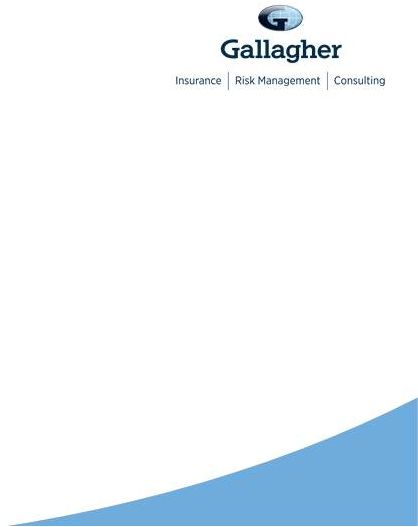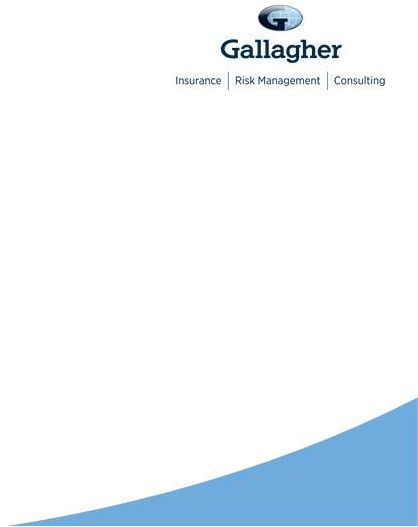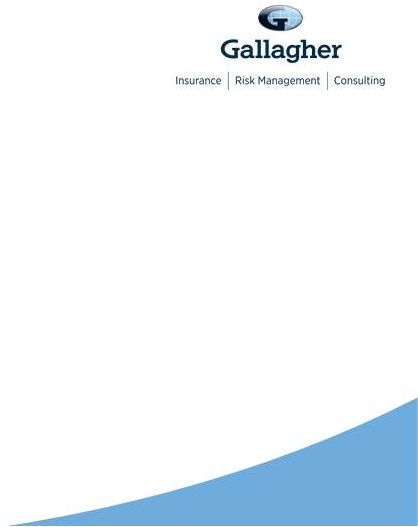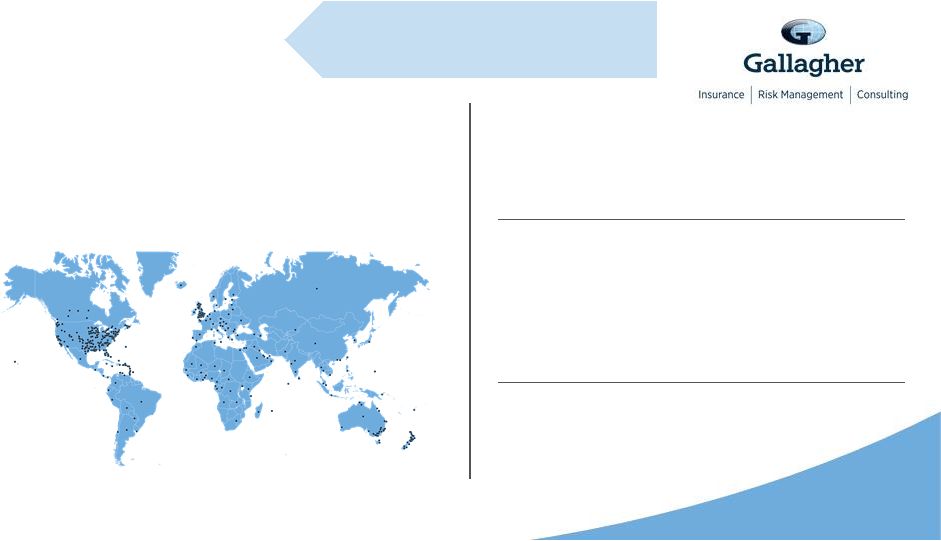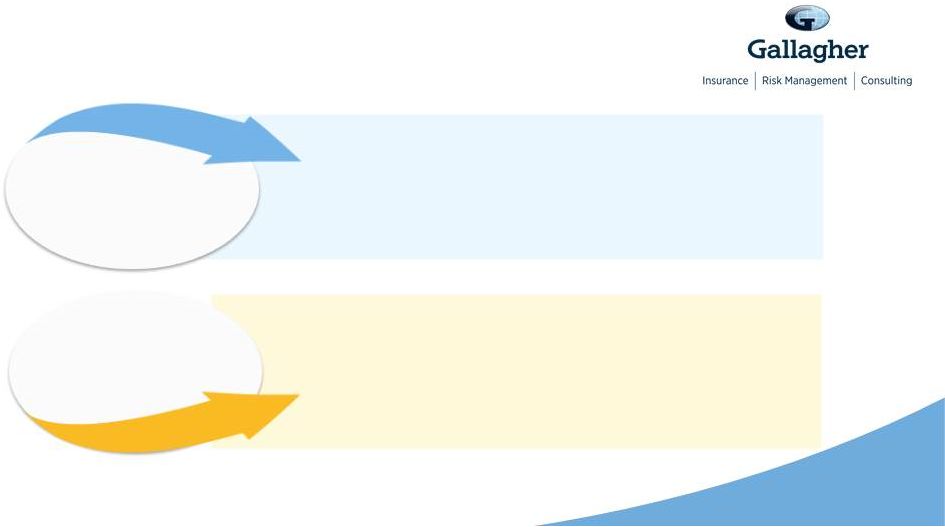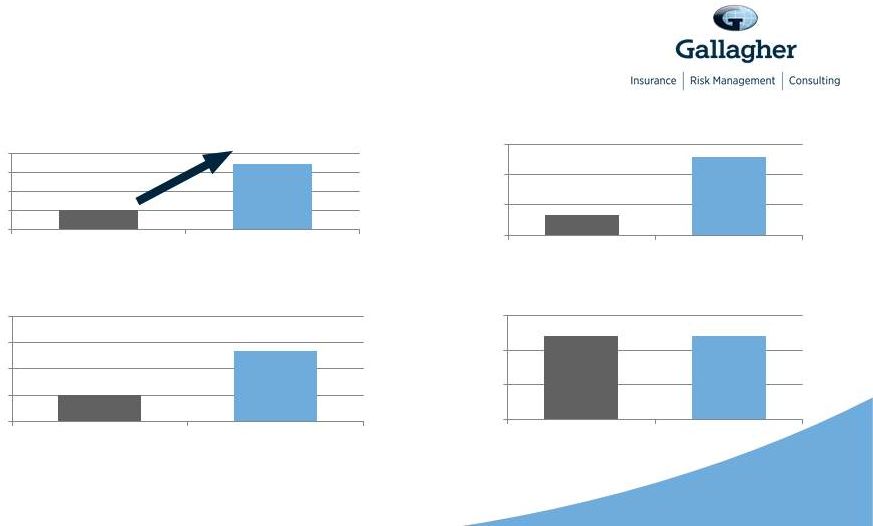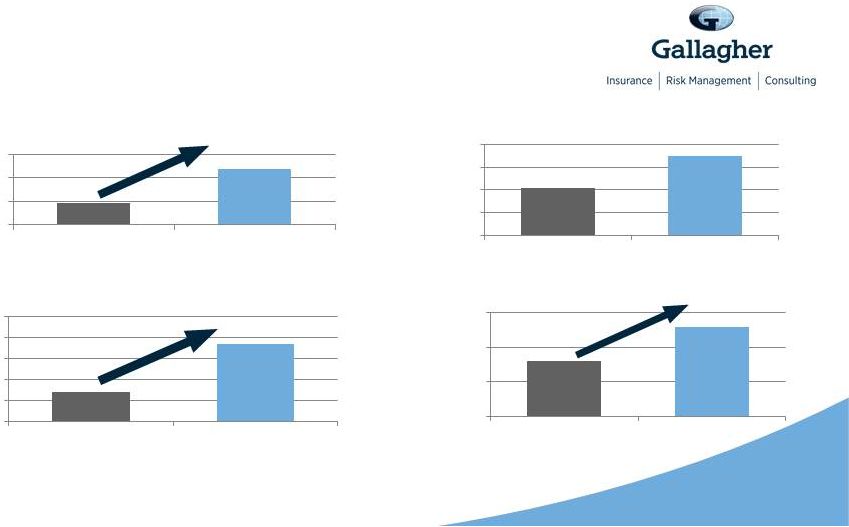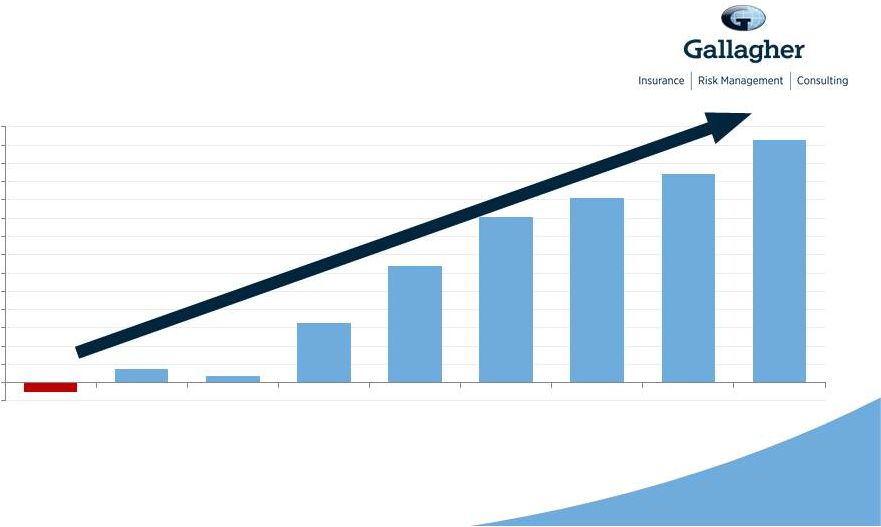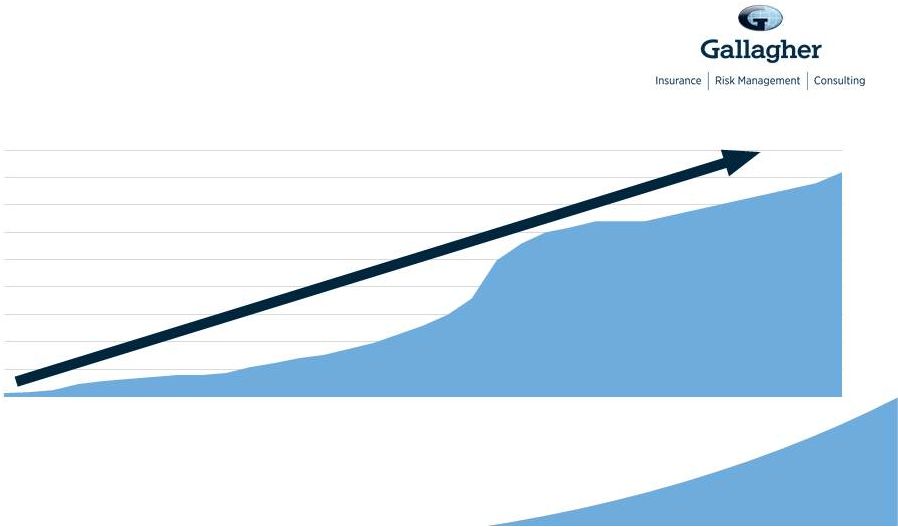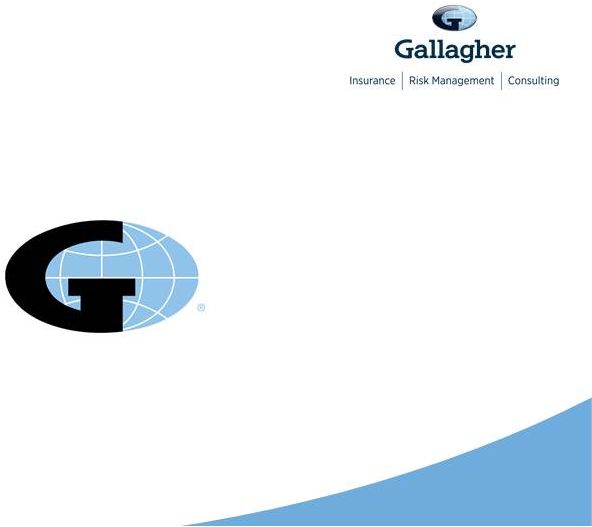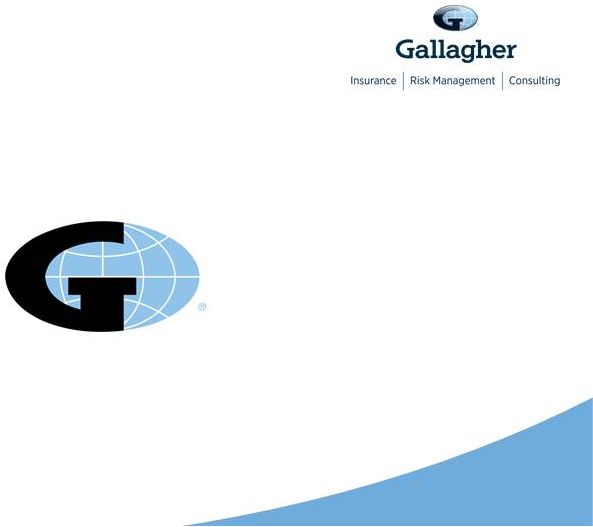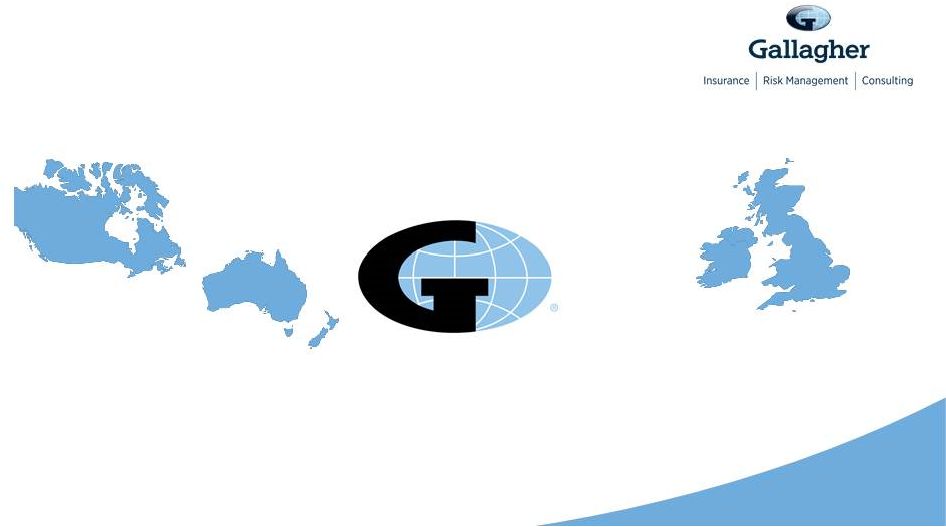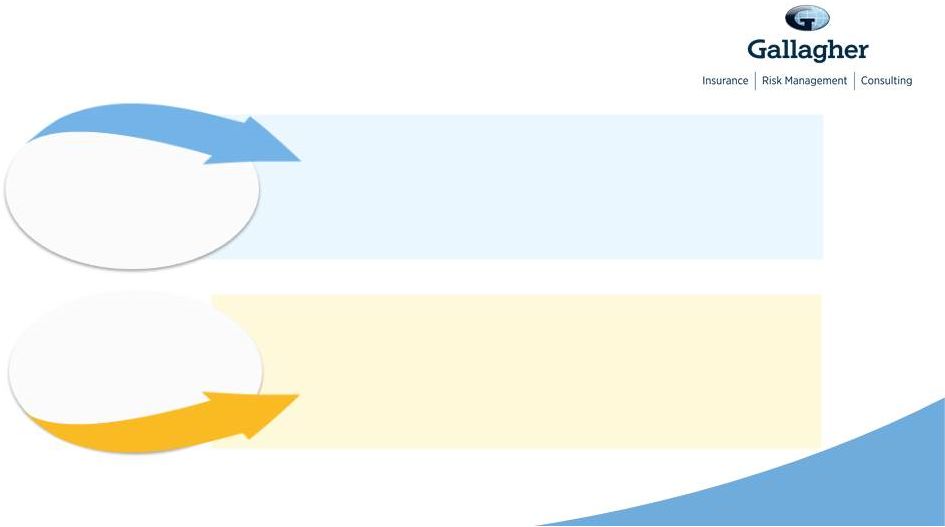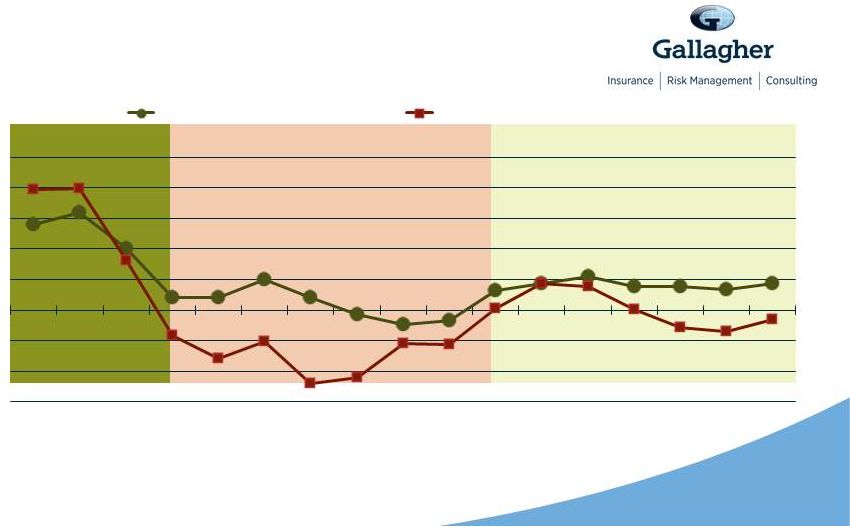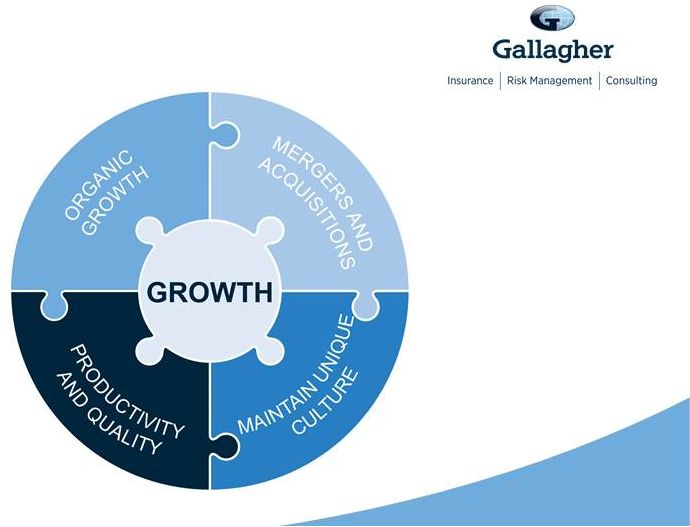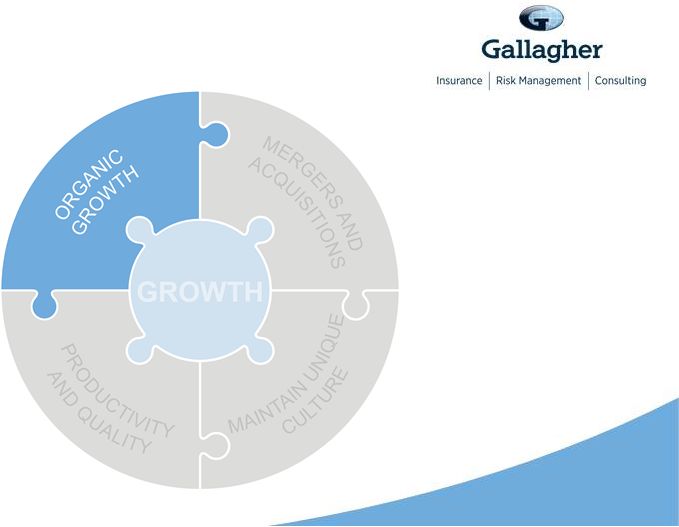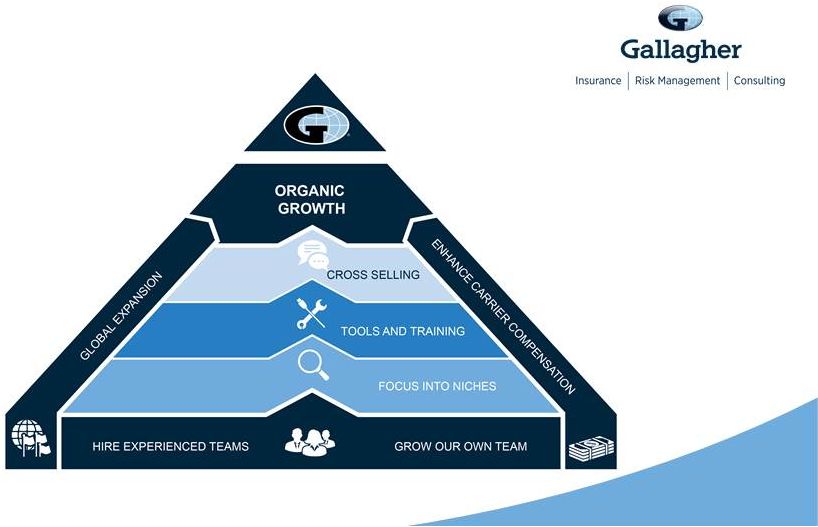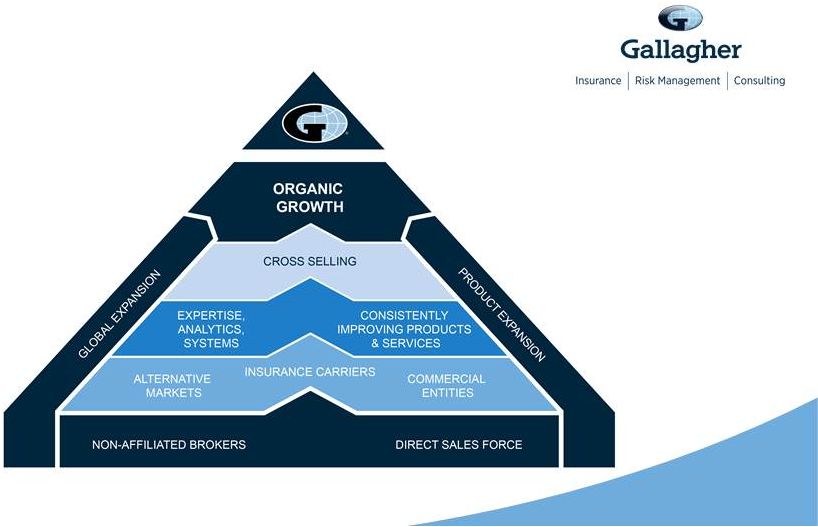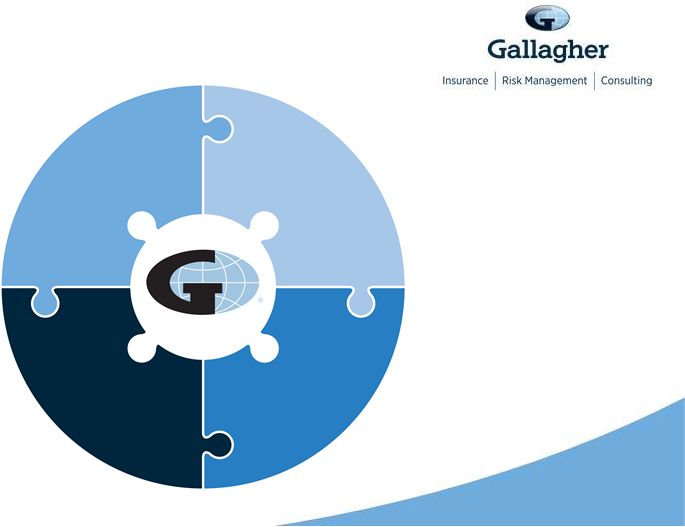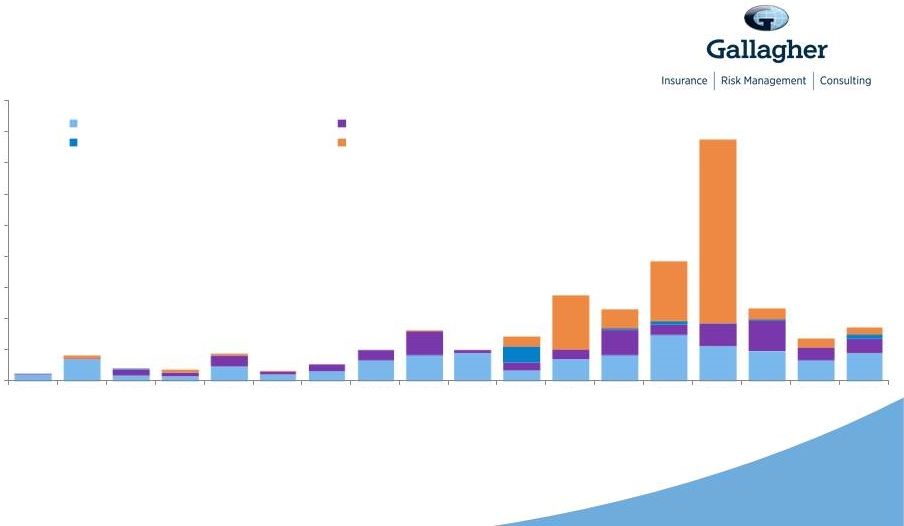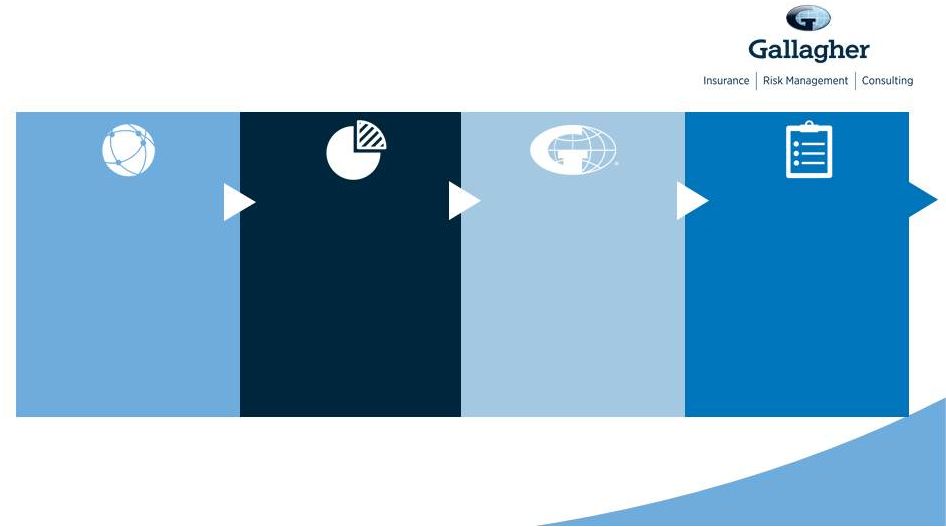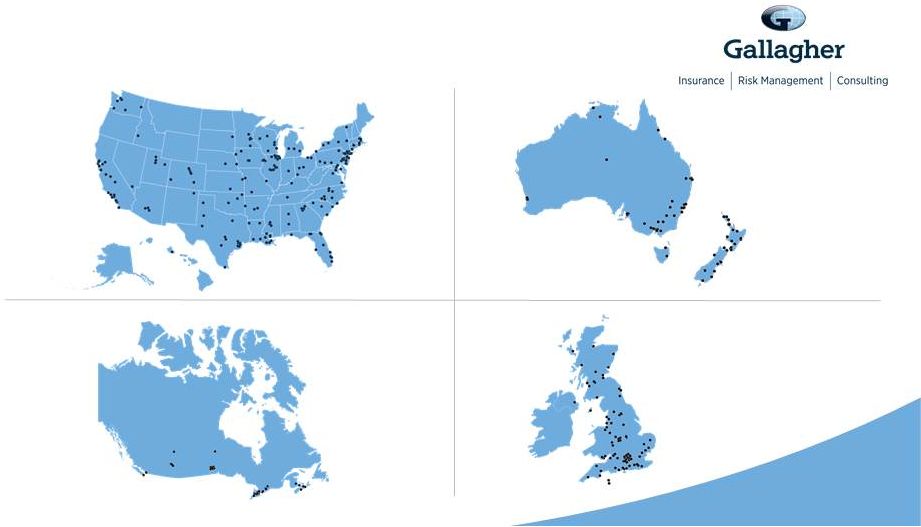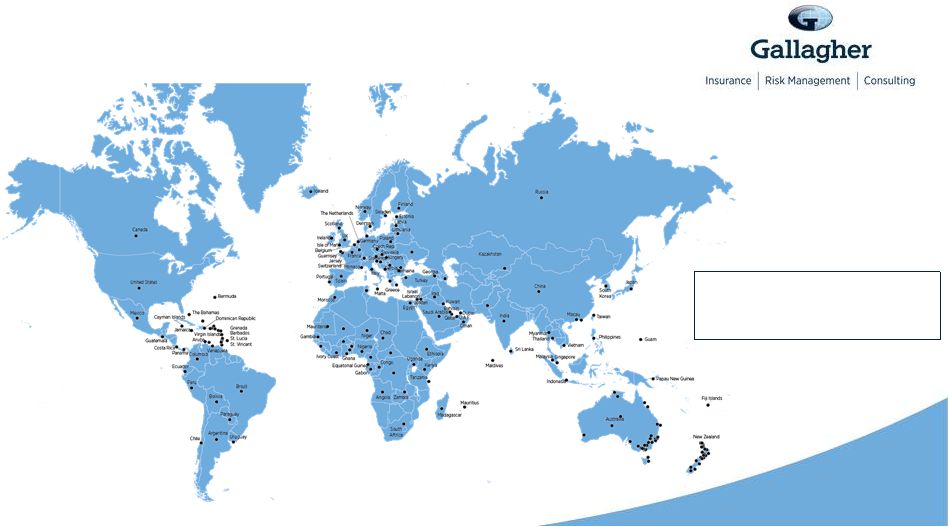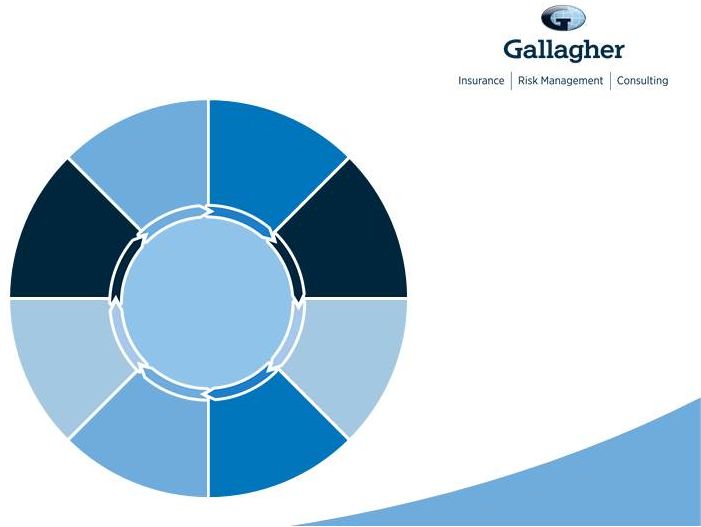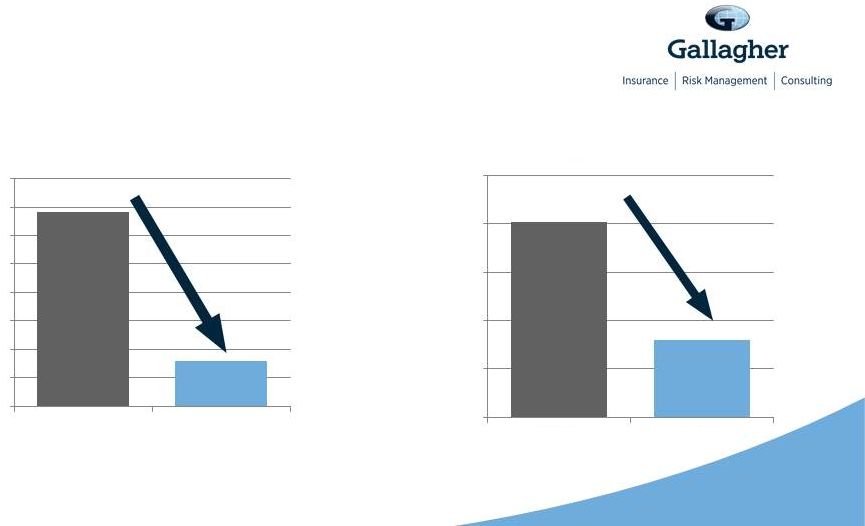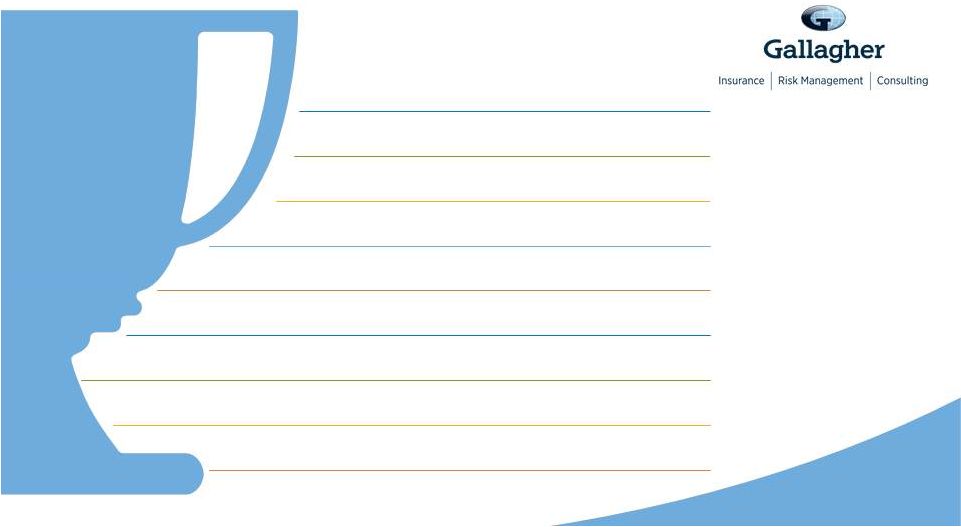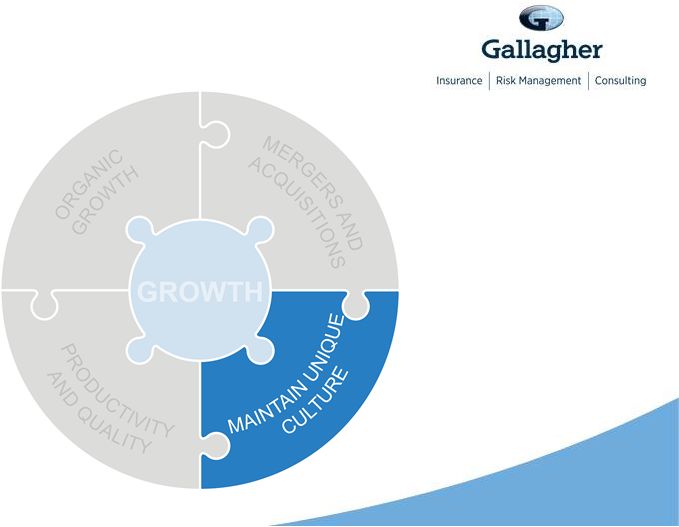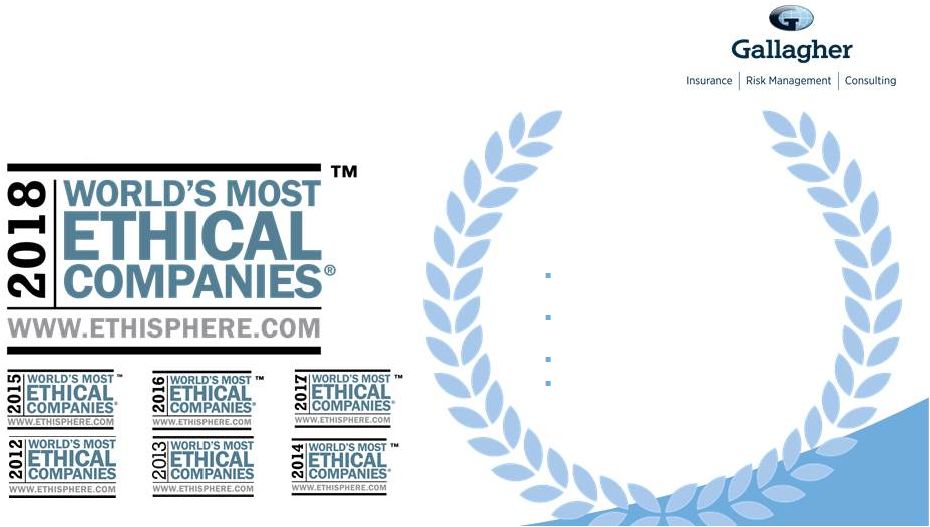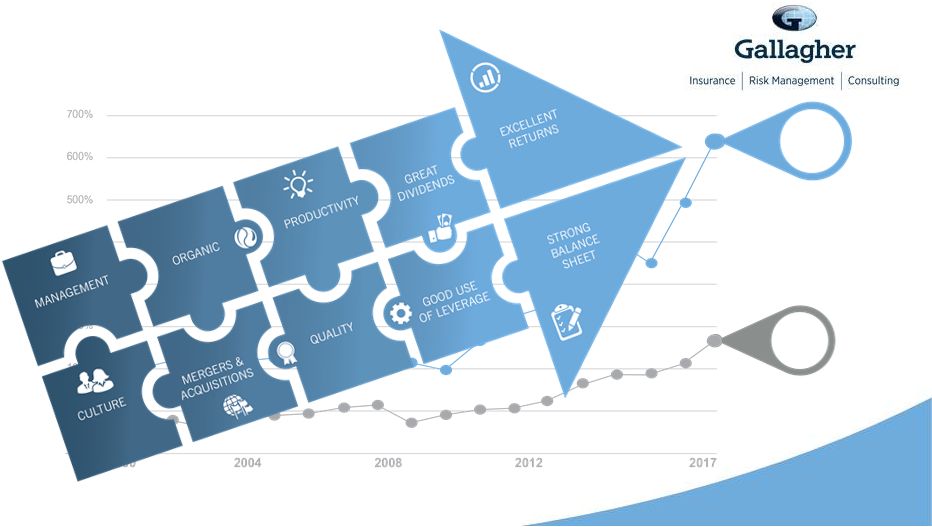8 18CORP23863J ©2018 ARTHUR J. GALLAGHER & CO. | AJG.COM This presentation includes references to Adjusted EBITDAC, Adjusted EBITDAC margin, Adjusted Revenues, Adjusted Operating Expense Ratio and Organic Revenue Growth, which are measures not in accordance with, or an alternative to, the GAAP information provided herein. Earnings Measures - Gallagher believes that each of Adjusted EBITDAC and Adjusted EBITDAC margin, as defined below, provides a meaningful representation of its operating performance and improves the comparability of Gallagher’s results between periods by eliminating the impact of certain items that have a high degree of variability. EBITDAC is defined as net earnings before interest, income taxes, depreciation, amortization and the change in estimated acquisition earnout payables. Adjusted EBITDAC is EBITDAC further adjusted to exclude gains realized from sales of books of business, acquisition integration costs related to large acquisitions, workforce related charges, lease termination related charges, acquisition related adjustments and the period-over-period impact of foreign currency translation, as applicable. Adjusted EBITDAC margin is defined as Adjusted EBITDAC divided by Adjusted Revenues (defined below). The most directly comparable GAAP measure for these non-GAAP earnings measures is net earnings. For the two segments (Brokerage Segment & Risk Management Segment) on a combined basis, net earnings was $174 million, $199 million, $253 million, $306 million, $325 million, $414 million and $484 million in 2011, 2012 , 2013, 2014, 2015, 2016 and 2017. For the Brokerage Segment, net earnings were $357 million and $424 million in 2016 and 2017, respectively. For the Risk Management Segment, net earnings were $57 million and $60 million in 2016 and 2017, respectively. See Cautionary Note on page 7. Revenue and Expense Measures - Gallagher believes that Adjusted Revenues and Adjusted Operating Expense Ratio, each as defined below, provides stockholders and other interested persons with useful information that will assist such persons in analyzing Gallagher’s operating results as they develop a future outlook for Gallagher. Gallagher believes that Organic Revenue Growth provides a comparable measurement of revenue growth that is associated with the revenue sources that will continue in the future. Gallagher has historically viewed organic revenue growth as an important indicator when assessing and evaluating the performance of its Brokerage and Risk Management segments. Gallagher also believes that using this measure allows financial statement users to measure, analyze and compare the growth from its Brokerage and Risk Management segments in a meaningful and consistent manner. Adjusted Revenues is defined as revenues, adjusted to exclude gains realized from sales of books of business, acquisition integration costs for large acquisitions, workforce related charges, lease termination related charges, acquisition related adjustments, and the period-over-period impact of foreign currency translation, as applicable. Adjusted Operating Expense Ratio is defined as operating expense, adjusted to exclude the items listed above for Adjusted Revenues, as applicable, divided by Adjusted Revenues. Organic Revenue Growth. For the Brokerage segment, organic change in commission and fee revenues excludes the first twelve months of net commission and fee revenues generated from acquisitions and the net commission and fee revenues related to operations disposed of in each year presented. These commissions and fees are excluded from organic revenues in order to help interested persons analyze the revenue growth associated with the operations that were a part of Gallagher in both the current and prior year. In addition, change in commission and fee revenue organic growth excludes the period-over-period impact of foreign currency translation. For the Risk Management segment, organic change in fee revenues excludes the first twelve months of fee revenues generated from acquisitions and the fee revenues related to operations disposed of in each year presented. In addition, change in organic growth excludes the impact of the period- over-period impact of foreign currency translation to improve the comparability of our results between periods by eliminating the impact of the items that have a high degree of variability or are due to the limited-time nature of these revenue sources. The most directly comparable GAAP measure for Adjusted Revenues and Organic Growth is reported revenues. For the Brokerage Segment, reported revenues were $533 million, $679 million, $783 million, $863 million, $946 million, $1,007 million, $1,114 million, $1,188 million, $1,276 million, $1,329 million, $1,544 million, $1,812 million, $2,126 million, $2,896 million, $3,324 million, $3,528 million and $3,831 million in 2001, 2002, 2003, 2004, 2005, 2006, 2007, 2008, 2009, 2010, 2011, 2012, 2013, 2014, 2015 , 2016 and 2017, respectively. For the Risk Management Segment, reported revenues were $718 million and $769 million in 2016 and 2017, respectively. On a combined basis (Brokerage Segment & Risk Management Segment) reported revenues were $4,246 million and $4,599 million in 2016 and 2017, respectively. See Cautionary Note on page 7. The most directly comparable GAAP measure for Adjusted Operating Expense Ratio is reported operating expense, which was $247 million and $614 million in 2008 and 2017, respectively, for the Brokerage Segment and $126 million and $189 million in 2008 and 2017, respectively, for the Risk Management Segment. Revenue Recognition Accounting Guidance. These slides present financial information for periods prior to our adoption of the new revenue recognition accounting guidance, ASC Topic 606. All such pre-adoption financial information is non-GAAP. Gallagher’s management believes this non-GAAP information is useful to investors because it assists them in understanding our year-over-year financial performance for periods prior to adoption of the new accounting standard. The 2017 information is provided for illustrative purposes only, and should be read together with, and not considered a substitute for, the Company’s historical financial statements. The financial information for 2017 does not constitute a restatement of the Company’s historical financial statements previously filed with the Securities and Exchange Commission. Reconciliations – For reconciliations, please see the examples set forth in our filings with the Securities and Exchange Commission covering periods prior to our adoption of the new revenue recognition accounting standard. Information Regarding Non-GAAP Measures |


